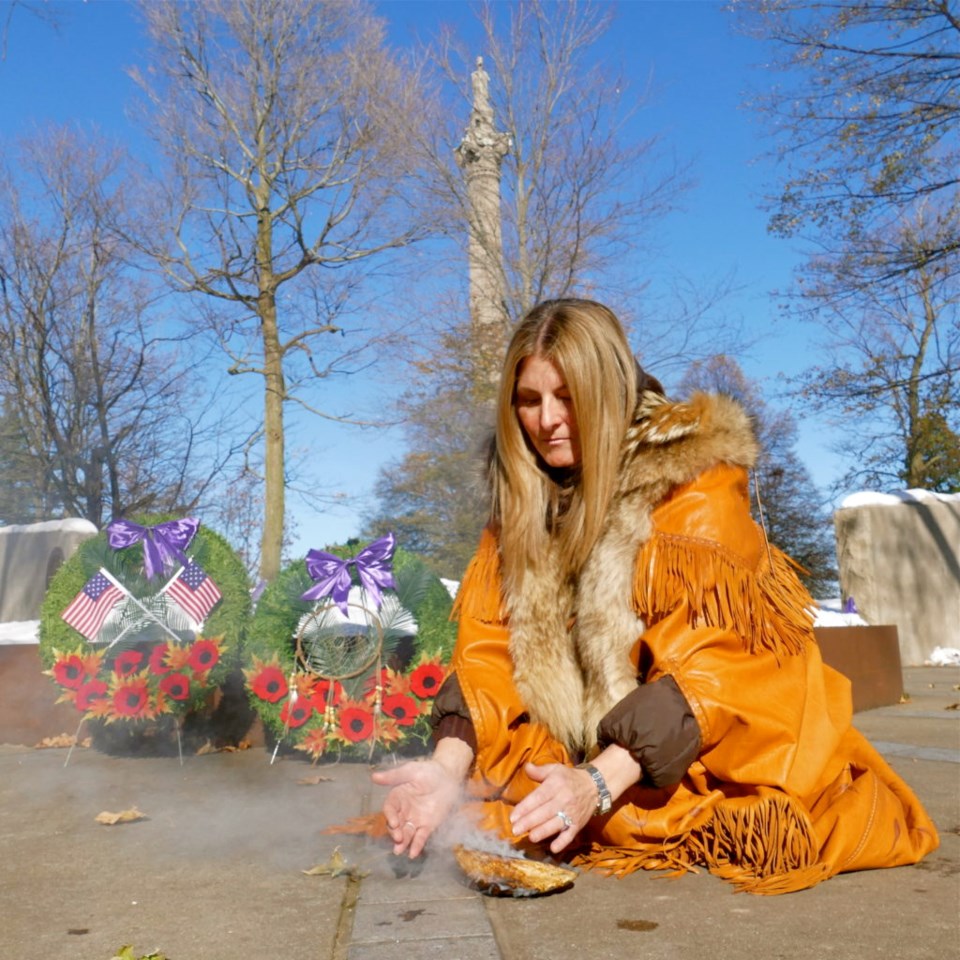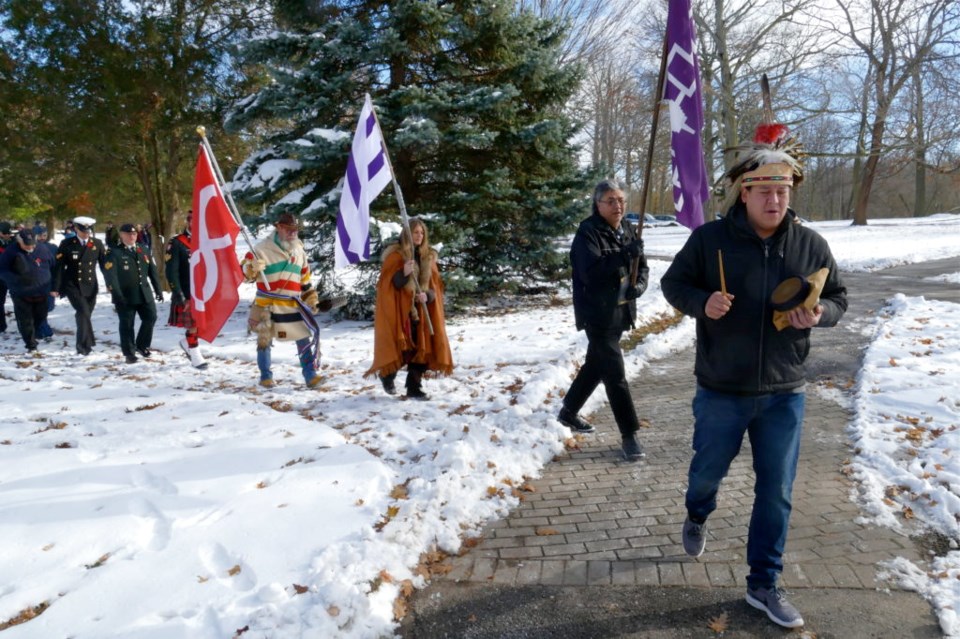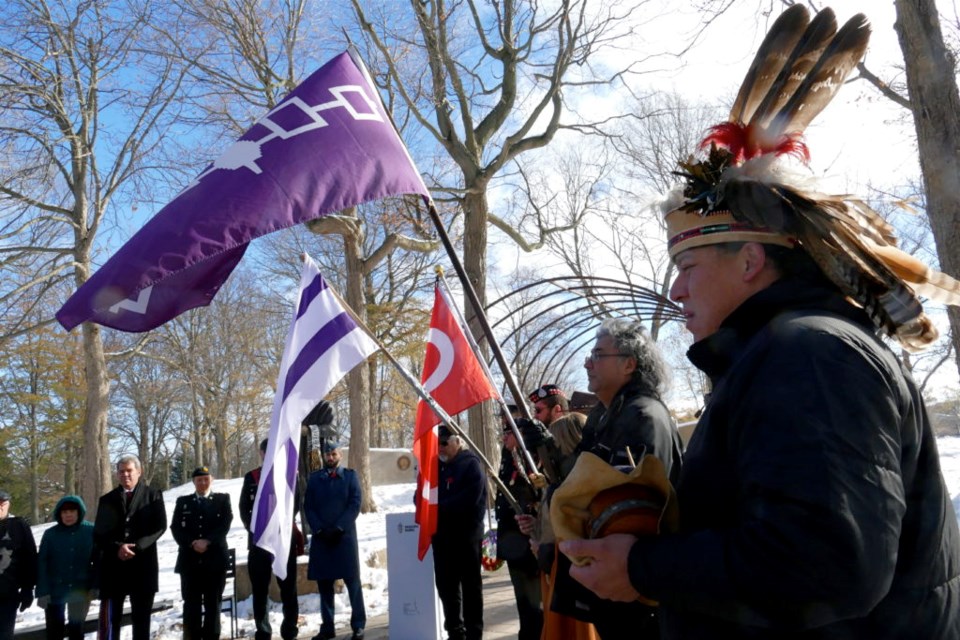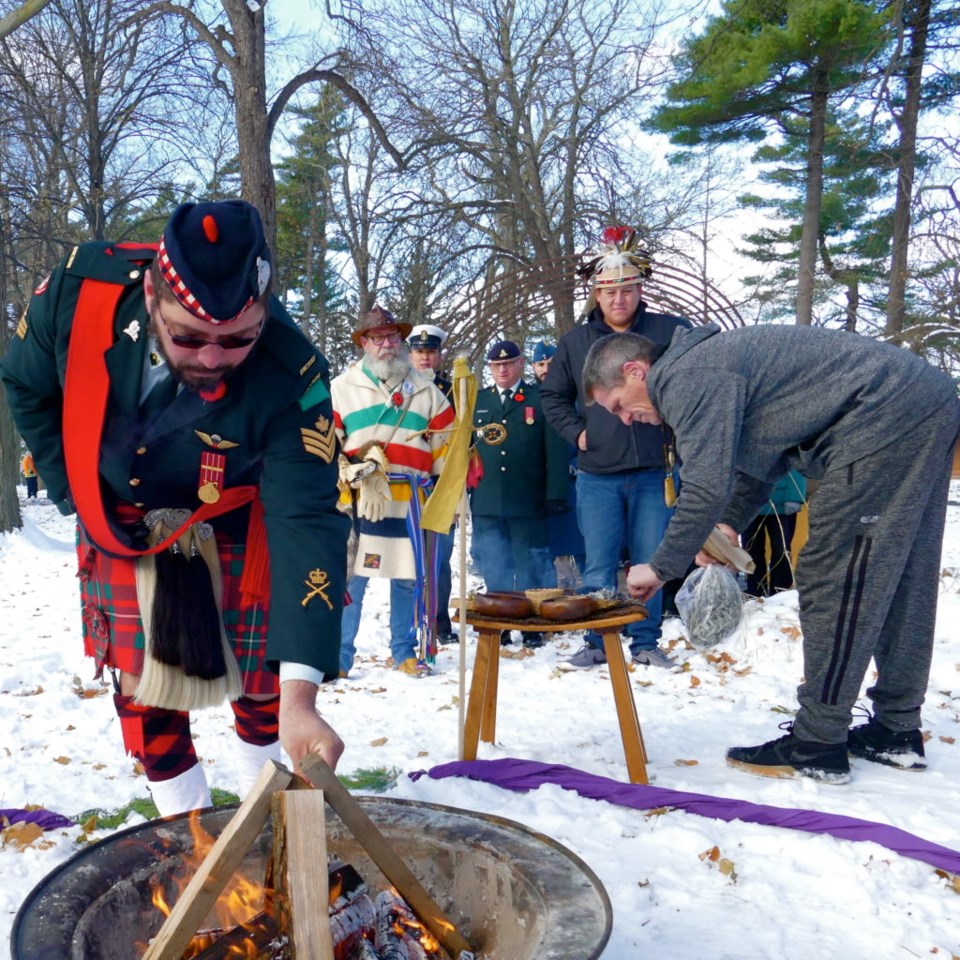
When Michele-Elise Burnett helped the dream of the Landscape of Nations Memorial in Queenston Heights become a reality, she and others began planning a ceremony to honour Indigenous veterans.
That came to fruition Saturday, with an Indigenous Veterans’ Day service at the memorial. The date is officially Nov. 8, and the ceremony was planned as close to that day as possible, given other similar events, Burnett says.
The service involved a wreath-laying ceremony, to remember Indigenous veterans and ancestors who helped make this country what it is, she says.
“It as an occasion to honour, acknowledge and reflect on the efforts of Six Nations veterans, something we’ve been working on for years,” says Burnett, a Metis Algonquin, Bear Clan, whose father, grandfather and cousin are veterans. Her cousin, Joe Paquette, was instrumental in forming the Metis Veterans’ Council, her father was a fighter pilot in the Second World War, and her grandfather an artillery soldier in the First World War.
“When we built the memorial, we knew it was going to be a place to reflect and to pay tribute to the sacrifices of Indigenous warriors,” says Burnett.
To see the event unfold and the many people who attended, was “heartwarming and emotional for me. We planned to keep the event small and grow it,” she says.
It was an opportunity “to pay respects to my family, and all the Indigenous veterans who fought for our freedom. The service is a fitting tribute to Six Nations and native allies who have made a difference in the history of Canada.”
Burnett was part of the original committee that planned the Landscape of Nations Memorial, which opened in October, 2016. The project was a legacy of the bicentennial celebration of the War of 1812, intended to recognize the role of First Nations in the outcome of the war.
Since then, she says, the memorial has been used, by herself and memorial co-chair Tim Johnson, “in so many different ways, with Indigenous education initiatives and tours, as a tool for education and acknowledgment of the Indigenous contribution to that war and others since.”
The memorial, she says, has become an outdoor classroom.
“The memorial fills in the gap that has existed in the history of our country,” she says. “It completes a story that was never told, for people, Indigenous and non-Indigenous, to hear our story, the story of our ancestors. Now we have a place to tell those stories about what we really did in forging this country of Canada,” she says.
“This is a great way to talk about, reflect on and memorialize our veterans who have done so much for our country, and to learn about our history and our culture.”
During Saturday’s opening procession, Burnett carried the flag of the Two Row Wampum, which symbolizes the 1613 agreement between the Haudenosaunee and representatives of the Dutch government, declaring peaceful coexistence. The agreement is considered by the Haudenosaunee to be the basis of all of their subsequent treaties with European and North American governments.
“It’s a beautiful flag,” she says, “representing both
cultures, the European culture on one side, and the Indigenous people on the other, in a canoe. Between us is a river. We’re floating along the river in peace, parallel, and equal. It represents the true friendship and respect that is necessary to have peace.”
Behind her in the procession was Metis Brian Kon, carrying the Metis flag, which would be used when they go to war, or for ceremonies representing veterans, she says, and in front, was veteran Darrell Doxtdator, with the Hiawatha flag, representing the five original nations of the Haudenosaunee: the Mohawk, Oneida, Onondaga, Cayuga, and Seneca.
The Niagara Parks Commission has been an important part of the story of the memorial and Saturday’s ceremony, says Burnett.
“They have been incredible stewards of our land, and are committed to working with us so that we can tell our story. Tim Johnson and I are very grateful for their support.”
Representing the Town and the Niagara Parks Commission, Lord Mayor Betty Disero was invited to speak at the event. “I would like to begin by acknowledging that the land on which we gather has been inhabited by Indigenous peoples for millennia. We are grateful for the opportunity to spend time here as we reflect and remember the sacrifices of Indigenous veterans. On these sacred grounds, Native allies fought alongside British and Canadian soldiers to secure victory at the battle of Queenston Heights and other pivotal events throughout the War of 1812,” says Disero.
“Today we remember the fallen, the dedicated, and the faith-keepers whose efforts forged a lasting peace. I can think of no better place to hold this ceremony than here at the Landscape of Nations Memorial.”


